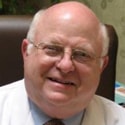Dr. Murray Fox saw the direction the world of medicine was heading and wanted to get ahead of it. He founded one of the first organizations in North Texas that focused on value-based care, contracted directly with healthcare payers, and looked to assume risk in managing the care of patients long before Medicare was forcing providers to do so.
Fox opened his practice in Plano in the 1970s, and before long, was the chief of the medical staff at what would become Medical City Plano. Throughout the 1980s and 1990s, the major insurance companies began pushing more limited HMO plans, and Fox found the discounts on care they required repulsive. He knew they could provide care to patients and make money in a better way.

“It is now time to deal with bulk healthcare consumers,” he told the hospital administrators at the time. “We can do this cheaper and better than what these people are doing.”
So he set out to do so. He organized the physicians into healthcare companies that landed direct contracts with major employers in the area like the City of Plano, Plano Independent School District, and the City of Richardson. In an arrangement that is more common today but was rare at the time, the employers would directly pay the providers to manage their care, cutting out the insurance companies. But that meant that the groups didn’t have access to the massive cash reserves of the larger insurers, so they would be forced to look more closely at patients and prevent the expensive problems before they arrived.
Fox’s ambitions went beyond local employers. He contacted Plano-based JC Penney, which loved the idea of directly contracting with the local physicians, but with employees all over the country, he couldn’t make a similar deal in every city where they had employees. That led Fox to find an insurance company that would play ball, and Aetna stepped up. They formed the Plano Physicians Group and let Aetna take over the marketing of the providers in the area, setting up value-based contracts with employers.
As he learned more about working with employers, he began to understand their perspectives. “I realized that what my definition of quality of healthcare was and what their definition was not the same.”
Employers were more concerned with preventing unnecessary care and testing and the costs that go with it. More importantly, they were concerned with when the employee could get back to work. If these physician groups were going to manage the risk usually handled by insurance companies and be rewarded for keeping quality high and costs low, they would need more information about the patient and better case management. They needed to educate physicians on efficiency, help them understand their patients’ profiles, and determine the true costs of caring for their patients. At that point, the group could create an agreement with an employer that would keep workers healthy, control costs, and keep the doctors in business. “We do not have the information to be able to know what it takes to be in risk medicine,” Murray said at the time. “The secret is in the data.”
PPG formed Patients Physician Network in 1996 to help physicians understand their costs, utilization, outcomes and guide them to best practices. It looked at fee-for-service claims data, developed patient profiles and costs, and identified efficiencies in the course of care, educating the physicians in the network along the way. The group raised money to help build out the data collection and education infrastructure, and PPN was born.
Around 2011, PPN began working with other insurers to be rewarded for keeping costs low and sharing in the savings. Today’s arrangements are called Accountable Care Organizations, and almost every insurer or health network has its own. But at the time, the arrangement was cutting edge.
It wasn’t always easy to get the physicians to think differently about their practice, but Fox and the rest of the group saw the writing on the wall, and what was rare back then is common now, with Medicare constantly pushing providers to save costs and allowing them to share in the savings. “It took us probably four or five years to get the doctors fully on board with understanding what they had to do and how to do it,” Murrays says.
Physicians like control and didn’t take well to being told how to practice medicine. But Fox was able to navigate the line between business and healthcare with a focus on quality. “My basic premise was that we have the quality anyway, and now it’s going to be measured. You’re going to get compensated directly based on what you do, not on what somebody else does. That made logical sense to a number of people.”

Fox stepped down from being CEO of PPN in 2016 but stayed on board as Chief Medical Officer until this year when he bowed out and made way for Dr. Janelle Watts, an OBGYN who wants to continue what Murray started decades ago. “We are looking at ways to increase numbers and providing something that they see as being unique, or better than what they can get elsewhere,” she says.
While Murray may have been way ahead of his time in the business of healthcare, he demurs on his foresight. “I tell people very honestly, ‘It’s not that I’m so smart, I just knew how to get the people around me help.'”





